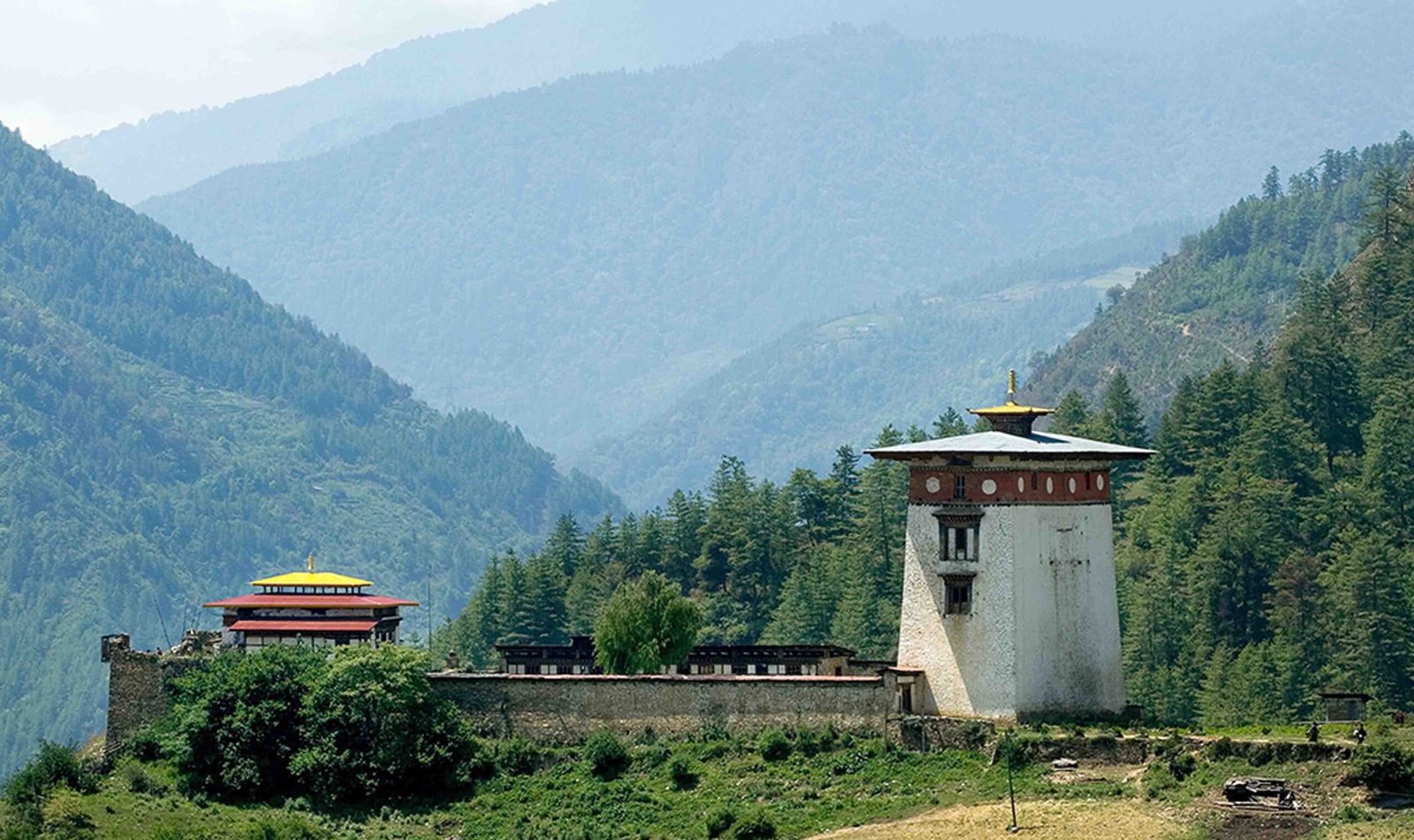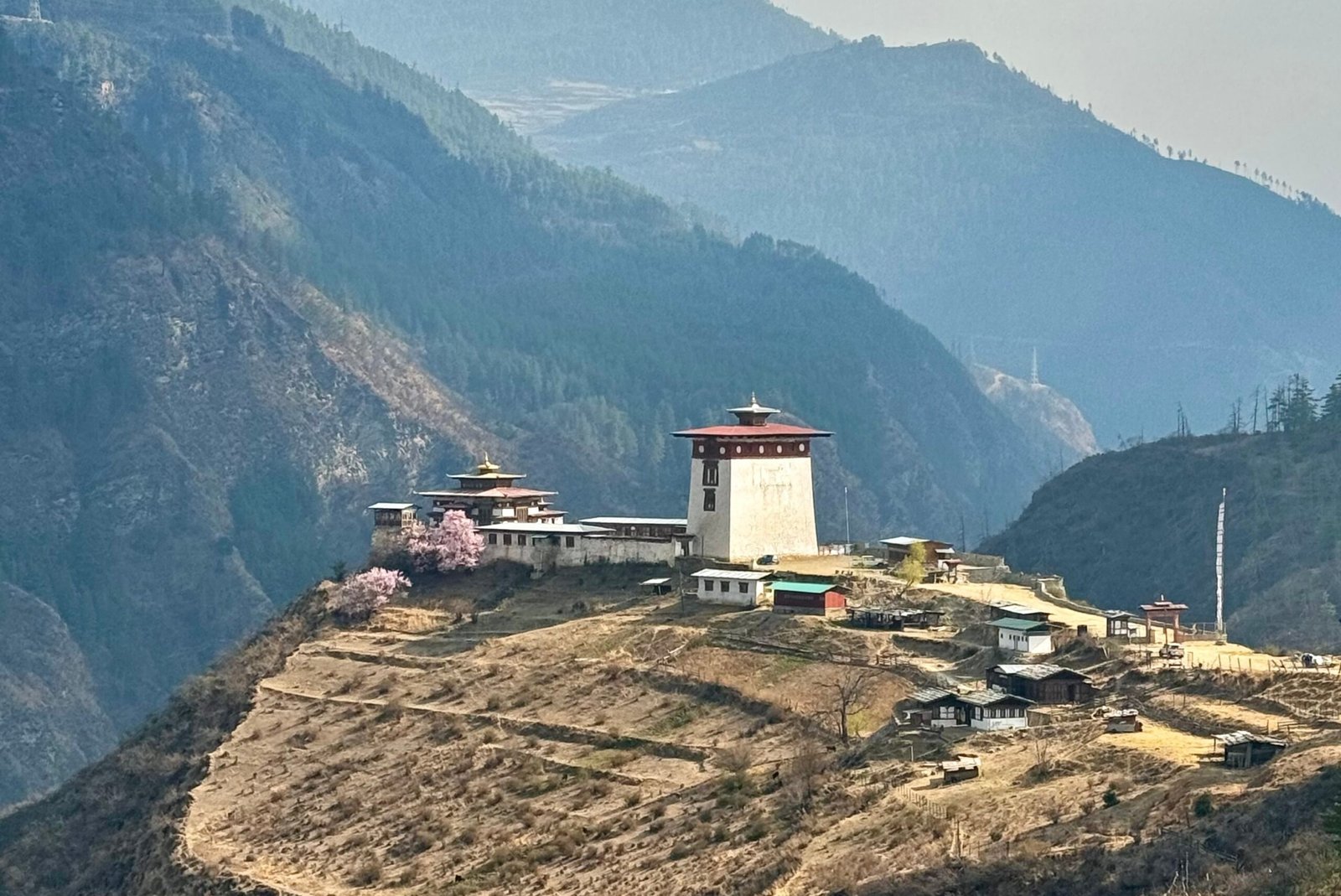Bhutan, known for its serene beauty and spiritual tranquility, offers a journey through its rich heritage and unique architecture. Among its many treasures, Dobji Dzong stands as a prime example of Bhutanese cultural heritage. A luxury tour to Bhutan offers the opportunity to explore this iconic fortress, its historical significance, and its connection to the country’s spiritual heart. Located strategically in the village of Dogar, the Dobji Dzong is one of Bhutan’s oldest and most important structures, making it a must-visit during any luxury tour of Bhutan.
The Birth of Dobji Dzong: A Historical Gem of Bhutan

Dobji Dzong, often referred to as the first model Dzong of Bhutan, was constructed in 1531 by Ngawang Chogyal, the brother of the renowned “Divine Madman” Drukpa Kunley. Drukpa Kunley is celebrated in Bhutanese folklore for his unorthodox yet deeply spiritual approach to Buddhism. The construction of Dobji Dzong was a momentous event, chosen to honor the religious significance of the area. Ngawang Chogyal, a revered religious figure in his own right, was inspired by a mystical spring that originated beneath the throne of Jetsun Milarepa, a Tibetan Buddhist figure of immense renown.
During the luxury tour of Bhutan, visitors can experience how this Dzong, with its rich blend of history, architecture, and legend, continues to stand as a symbol of Bhutan’s enduring connection to its religious roots. The spring, which was the source of the Dzong’s location, is said to hold spiritual energy, further deepening the cultural and religious significance of Dobji Dzong. The architectural design of the Dzong combines elements of traditional Bhutanese style with strategic considerations, making it a crucial landmark in the country’s history.
Strategic Location and Cultural Significance
The location of Dobji Dzong is another captivating aspect of its appeal. Perched on a hill in the village of Dogar, the Dzong holds a strategic vantage point, which once made it a critical defensive fortification. Its high elevation provided an optimal view of the surrounding areas, allowing it to serve as a stronghold against potential invaders. However, in a significant shift in its role, the Dzong was converted into a prison during Bhutan’s historical period of internal conflict.
Today, the Dzong has been restored to its original religious purpose. The central monastic body of Bhutan oversees its care and maintenance, and it now functions as a monastic school. This restoration highlights Bhutan’s commitment to preserving its cultural and religious heritage. Visitors on a Bhutan luxury tour can take in the stunning architecture and the spiritual atmosphere of the Dzong, while also witnessing the continued reverence for Buddhism and the Dzong’s educational role in shaping future generations of spiritual leaders.
A Glimpse Into Bhutanese Architecture and Heritage

Dobji Dzong is an exemplary representation of Bhutanese architecture, characterized by its massive walls, intricately designed wooden windows, and distinctive Bhutanese style of construction. Built in the traditional Dzong style, it showcases the use of stone, wood, and clay in a harmonious way that is perfectly adapted to Bhutan’s mountainous terrain. As guests embark on their luxury tour of Bhutan, they can appreciate the skillful craftsmanship that went into constructing such a formidable yet beautiful structure.
The Dzong’s design, with its towering walls and grand courtyards, evokes a sense of grandeur and awe. The fortress-like structure, combined with its ornate temples and prayer halls, reflects the spiritual and cultural vibrancy of Bhutan. A visit to Dobji Dzong offers tourists a deeper understanding of Bhutan’s architectural heritage and the aesthetic principles that continue to shape the country’s monasteries, forts, and other significant landmarks.
From Jail to Monastic School: A Transformation Over Time
Throughout its history, Dobji Dzong has undergone several transformations. Once a strategic military site, the Dzong was later repurposed as a jail during a time of internal political strife in Bhutan. This dark chapter in the Dzong’s history contrasts sharply with its current role as a monastic school. The transformation of Dobji Dzong from a place of confinement to a center of spiritual learning symbolizes Bhutan’s deep commitment to Buddhism and its monks’ education.
Visitors on a luxury tour to Bhutan can reflect on the fascinating history of this site and how it has evolved over the centuries. The story of Dobji Dzong illustrates Bhutan’s resilience and dedication to preserving its religious identity. Today, the Dzong remains an important institution for monastic studies, and its serene ambiance continues to inspire those who visit it.
The Legend of the “Five White Boulders” and Its Spiritual Roots

In addition to its historical and architectural significance, Dobji Dzong is surrounded by rich legends that further deepen its spiritual allure. The Dzong’s location in the village of Dogar is tied to the story of the “Five White Boulders”—a symbol of purity and spiritual power. According to local legend, these boulders were a divine gift, and their presence reinforced the religious importance of the area. The name Dogar, which translates to “white border,” is believed to be a reference to these boulders, emphasizing the connection between the physical and spiritual realms in Bhutanese culture.
For luxury travelers with an interest in spiritual and mystical stories, a visit to Dobji Dzong offers an opportunity to learn about these local legends and their role in shaping Bhutan’s unique religious landscape. The Dzong stands as a testament to the power of spiritual belief, and its connection to the surrounding landscape further enhances the experience for those on a luxury Bhutan tour.
A Place for Reflection and Peace: Experiencing Bhutan’s Spiritual Heart
For those seeking a transformative experience, a visit to Dobji Dzong offers the perfect opportunity for reflection and spiritual renewal. Set amidst stunning natural beauty, the Dzong provides a tranquil environment for visitors to connect with Bhutan’s deep spiritual heritage. The surrounding landscape, with its lush forests and distant mountains, offers a peaceful retreat from the bustle of daily life. It’s an ideal destination for anyone looking to experience Bhutan’s unique blend of natural beauty, cultural richness, and spiritual depth.
A luxury tour of Bhutan ensures that guests have the opportunity to explore Dobji Dzong in comfort, with knowledgeable guides sharing insights into the history, legends, and cultural significance of this iconic monument. Visitors can also enjoy the peaceful surroundings and perhaps even partake in meditation or prayer, embracing the spiritual atmosphere of the Dzong.
Conclusion: Dobji Dzong in the Context of a Bhutan Luxury Tour
Dobji Dzong, with its rich history, stunning architecture, and deep spiritual significance, offers a glimpse into Bhutan’s unique cultural heritage. A luxury tour of Bhutan provides the ideal way to experience this extraordinary site, combining comfort with the opportunity to explore the heart of Bhutan’s spiritual and historical legacy. From its construction in 1531 to its current role as a monastic school, Dobji Dzong continues to stand as a symbol of Bhutan’s commitment to preserving its traditions and fostering a deep connection to its cultural roots. For those looking to immerse themselves in the beauty and spirituality of Bhutan, a visit to Dobji Dzong is an essential part of the journey.

